Thanks to their online format, service marketplaces reshaped the gig economy. The ease of connecting service providers and customers online has led to a growing number of freelance and gig workers in recent decades.
Today, there are approximately 68 million freelancers in the USA, and this number is projected to reach 90.1 million by 2028. They work in various industries and schedules, such as part-time and full-time. So, targeting a specific niche of the gig economy is a lucrative business idea.
This article is a comprehensive guide to online service marketplaces. Our experts know the intricacies of building online marketplaces. So, they share tips on the essential aspects of service platforms, the steps to create one, and the development cost. Let’s get started.
What is a service marketplace?
Before building a service marketplace, it is helpful to understand what it is and get an overview of today’s successful platforms. In essence, an online service marketplace is a website where users can search for or offer services.
Online services can be anything. If you are an entrepreneur, you may have used employee scouting platforms like Fiverr to hire an experienced specialist. You also can use Uber to get to a particular place or book an apartment on Airbnb when going on a trip.
So, how does a professional services marketplace work? In this marketplace, service providers list their offerings. At the same time, buyers search through the offerings and hire service providers. The service marketplace charges a fee either from sellers and buyers or from both.
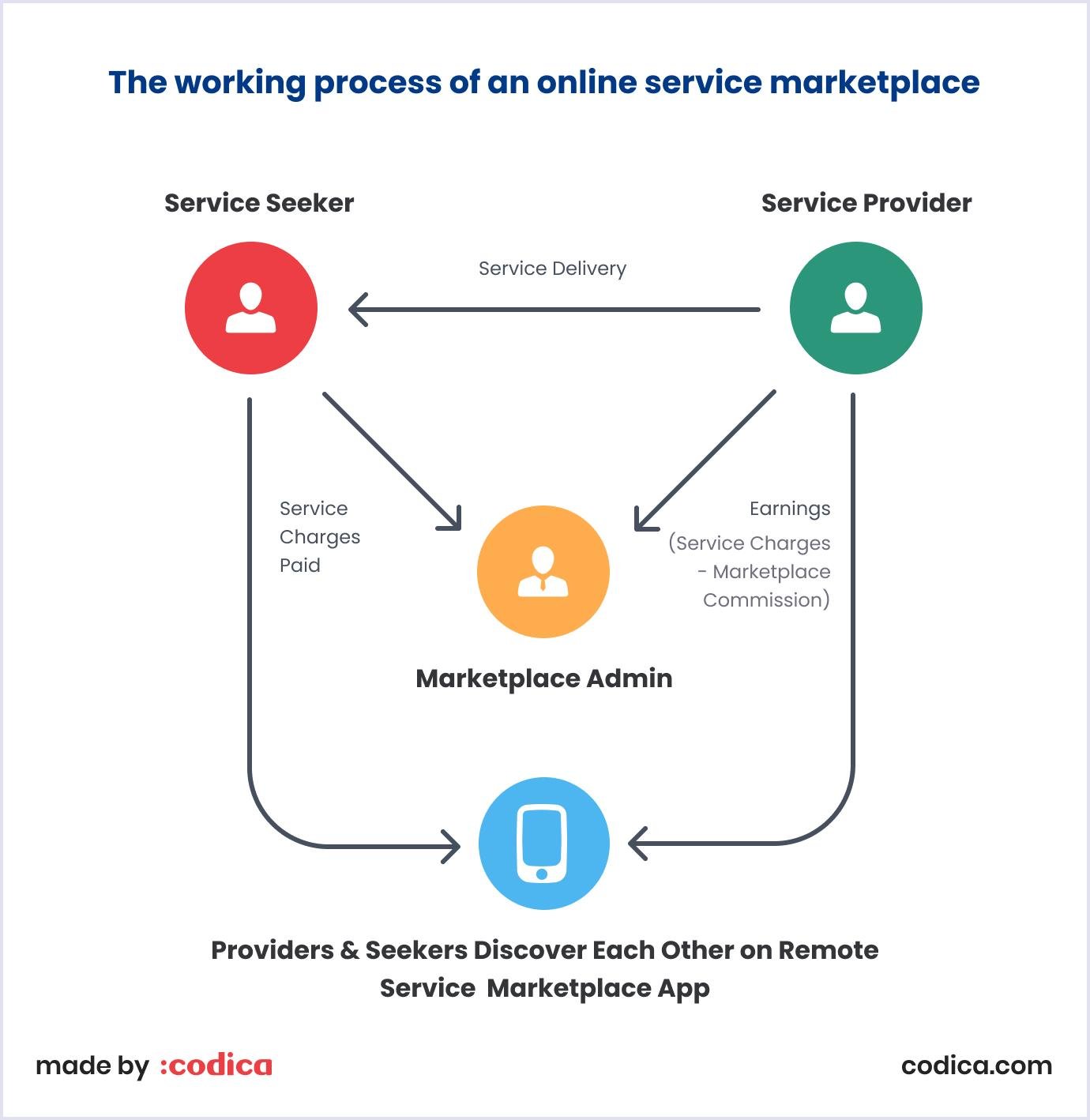
To succeed in the service marketplace industry, you should create a reliable and robust online platform that links service seekers with providers. Such a web solution acts as a bridge connecting both sides, and you will obtain a commission on each transaction.
Read also: Top 15 Online Marketplace Trends to Watch out for in 2024
Types of service marketplaces
Depending on the industry, there are many service marketplaces. Here are a few examples of successful platforms that offer services in different sectors:
- Freelance service marketplaces (Fiverr, Upwork);
- Fitness and wellness marketplaces (WellnessLiving, WeStrive);
- E-learning marketplaces (Udemy, Coursera);
- Taxi booking marketplaces (Uber, BlaBlaCar, Lyft);
- Rental marketplaces (Airbnb, Booking.com).
Key growth drivers in the online services industry
The service market has seen positive dynamics in recent years. This sector is projected to grow at a compound annual growth rate (CAGR) of 8.7% and reach $16.7 trillion in 2024. In addition, the freelance platform market is growing at a CAGR of 16.5% and is estimated to reach $14.39 billion by 2030.
The future is promising for the service market. So, let’s see which factors contribute to this market’s growth:
- Comfort and simplicity for consumers. Customers can browse several marketplaces to view professionals’ profiles, prices, and reviews. Buyers can also select service provision locations and times. These factors help customers choose and find the best services.
- Flexibility for service providers. Service marketplaces offer comprehensive features for providers and freelancers. The latter can list their services, communicate with prospects, and streamline prompt and secure transactions.
- Technological enhancements. Technological advances, such as mobile devices, cloud computing, and artificial intelligence in ecommerce, help make service transactions prompt and secure.
- Demand for digital services. Today, businesses get services via digital platforms. So, branding, programming, content writing, and designing lead freelance platforms to growth.

5 tips for a successful service marketplace launch
As your service platform is where providers and customers find each other, reliability and convenience are necessary. So, let’s see how you can approach the development to make your platform a delightful place to meet, interact, and close deals.
1. Conduct research to find your service niche
When starting a service marketplace, decide which marketplace niche you will operate in. This choice will define the services you promote with your platform and their location.
However, when choosing your niche, select one that will balance between low competition and a vast pool of service providers that will give value to your buyers.
For example, Cameo is a marketplace where celebrities and influencers can record personalized videos or live Zoom calls with their fans. This is a narrow niche helping celebrities and fans meet.
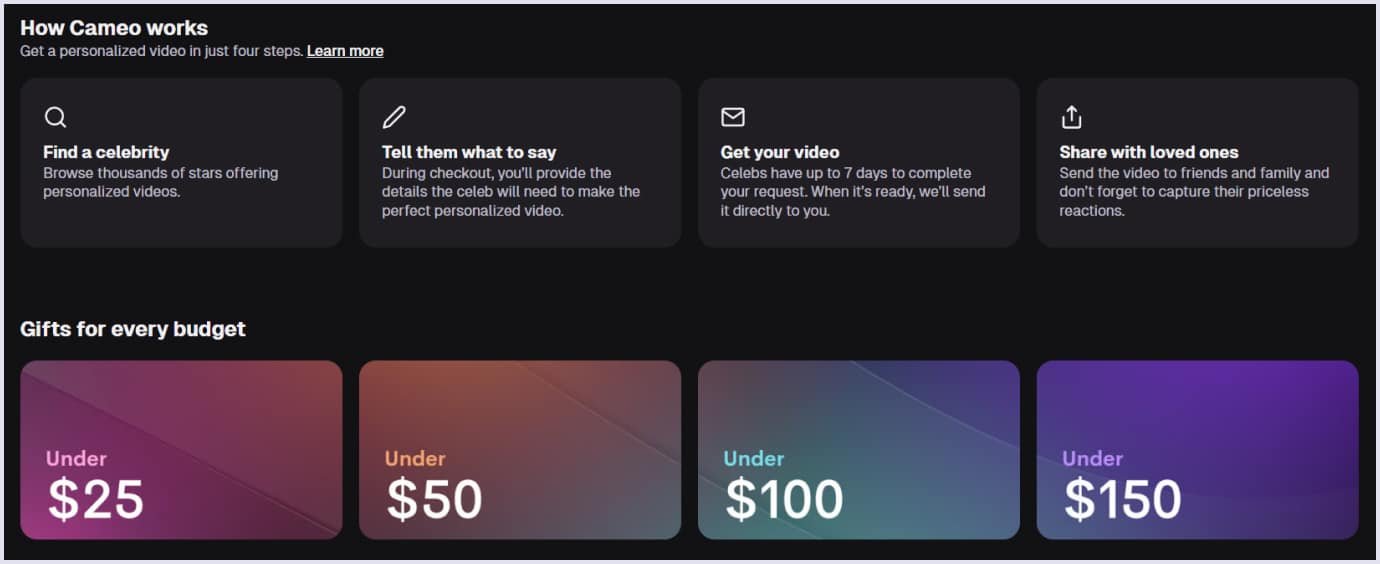
On the other hand, you can cover a vast pool of services with your online marketplace. For example, Thumbtack connects homeowners with specialists who provide plumbing, cleaning, and other house services. In addition to these services, you can order computer repair, financial, legal, and event planning services.
These two examples show how you can start your service marketplace website with a narrow focus and span it to grow your business.
At Codica, we conduct product discovery to analyze your business idea’s niche and commercial potential.
Product discovery is a crucial step to ensure that the service marketplace development is optimized. So, we go through the following steps for that:
- We analyze your request, set the project's goal, and form a clear idea of the ready product;
- We collect detailed information on the project from you for a better understanding of the product's essence;
- Also, we conduct market research, analyzing users and competitors in the chosen service marketplace industry;
- We draw up technical requirements for the platform in a document that contains all your suggestions and wishes;
- We discover a list of features you need regarding the unique value of the future global or local services marketplace;
- In addition, we define the precise time and clear budget frames for the project.
The project discovery will give you a clear vision of your service platform’s features and development resources. Check the short video below, where we discuss the particular deliverables you receive after this stage.
2. Define your unique value proposition (UVP)
Your service marketplace’s UVP is the core part of your business model. It shows what benefits your users will get and what distinguishes your marketplace from competitors.
Based on competitor and niche analysis for your marketplace at the discovery session, you can define your UVP. It should focus on the following aspects:
- Solutions for your providers’ and customers’ needs;
- Filling gaps in the market not covered by your competitors;
- Your service marketplace’s unique features, such as specialized services, innovative technologies, or excellent customer support;
- Unique selling points, such as convenience, reliability, customization options, or pricing.
Remember, your UVP is not formed once and for all. As your service marketplace website grows, your UVP can be modified based on user feedback, data analytics, and market trends. Once you improve your platform, remember to highlight and explain them to users. Thus, customers and service providers will learn about your platform’s benefits.
The basic aspects that ensure your UVP are as follows:
Your service marketplace is valuable.
Here, you need to be sure your online service platform is valuable for both service providers and service seekers. Emphasize the platform's main strengths that attract each side to join it.
Your marketplace platform is trustworthy.
Consider that your marketplace provides relevant information and meets the latest security standards. Also, providers' ratings and reviews and customer support should be added so that customers can choose the best service options.
Your online service marketplace is mobile-friendly.
The mobile-first approach in design has become the default for digital products, including service marketplaces. This is how we develop marketplaces in Codica to deliver the best experience. Also, we provide progressive web app development services. PWA products work perfectly on mobile devices, even with a poor Internet connection.
3. Choose a monetization strategy
Now, let’s move on to monetizing your service marketplace. Selecting the right monetization strategy for your website growth is essential when building a marketplace.
Let’s discuss the main monetization strategies you can implement in your service platform.
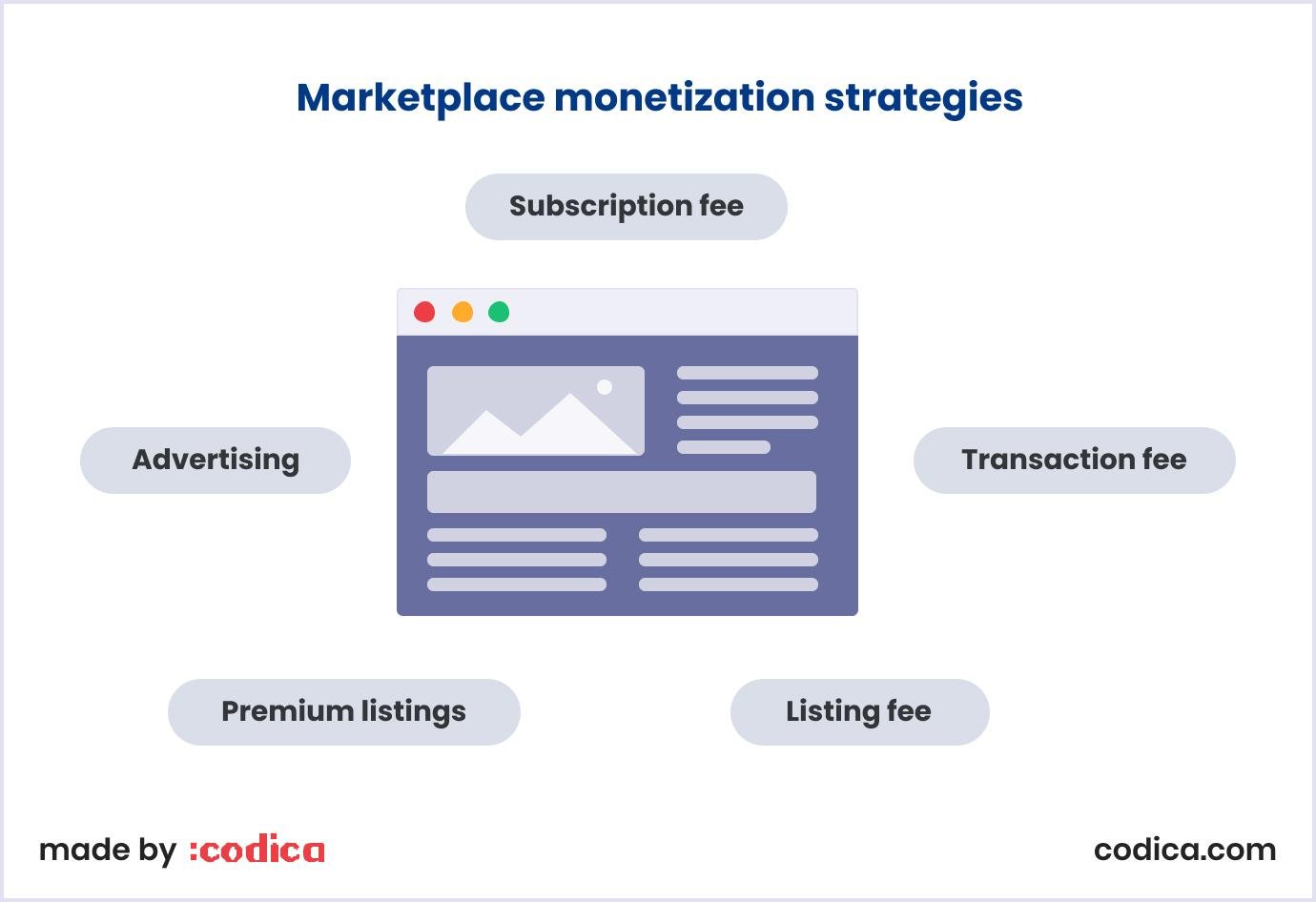
Subscription fee
This offer may include premium listings or advanced software solutions, as well as services integrated with the platform. The payment is usually made monthly or yearly.
Transaction fee
Sellers pay a percentage of the transaction value. Notably, a commission from each transaction is the primary income source for Fiverr and Airbnb. Below is an example of the Airbnb monetization model. On this marketplace, travelers and hosts pay a commission for every deal.
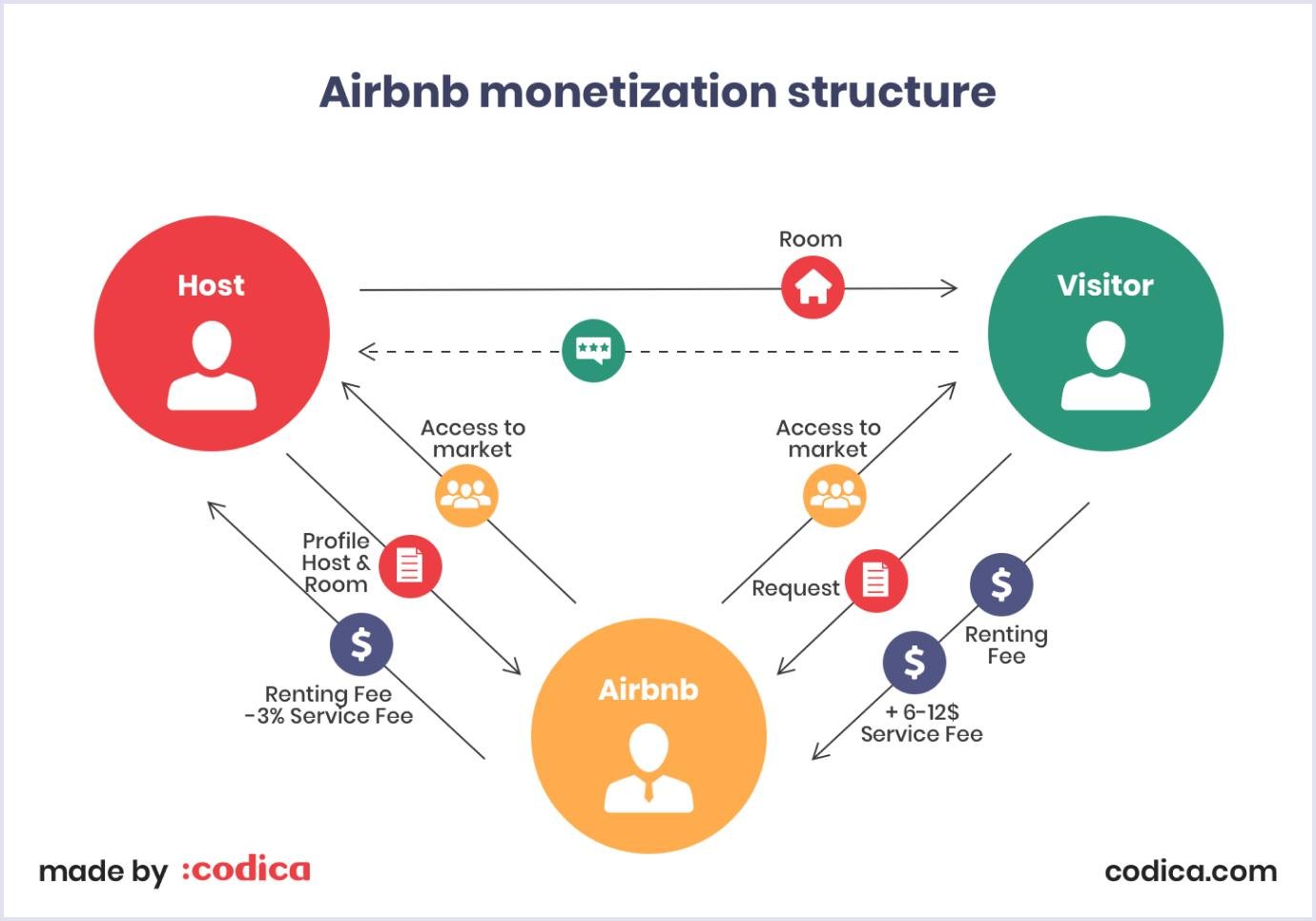
Listing fee
You charge the vendors for listing the services on your marketplace. This monetization type is not as common among online marketplaces for services as transaction or subscription fees. Still, it can be a good revenue source.
Premium listings
The marketplace charges a fee for a premium listing to keep it higher in the feed for a period of time.
Paid advertising
Featured ads are an excellent way for vendors to promote their services and get more visibility on your website.
4. Think about promotion and user acquisition
Online marketplace promotion is a significant challenge. Every marketplace business frequently struggles with user acquisition, the so-called chicken and egg problem. Suffice it to say a website needs to draw both buyers and service providers, but neither party will come without the other. There are different strategies for attracting customers to join your marketplace.
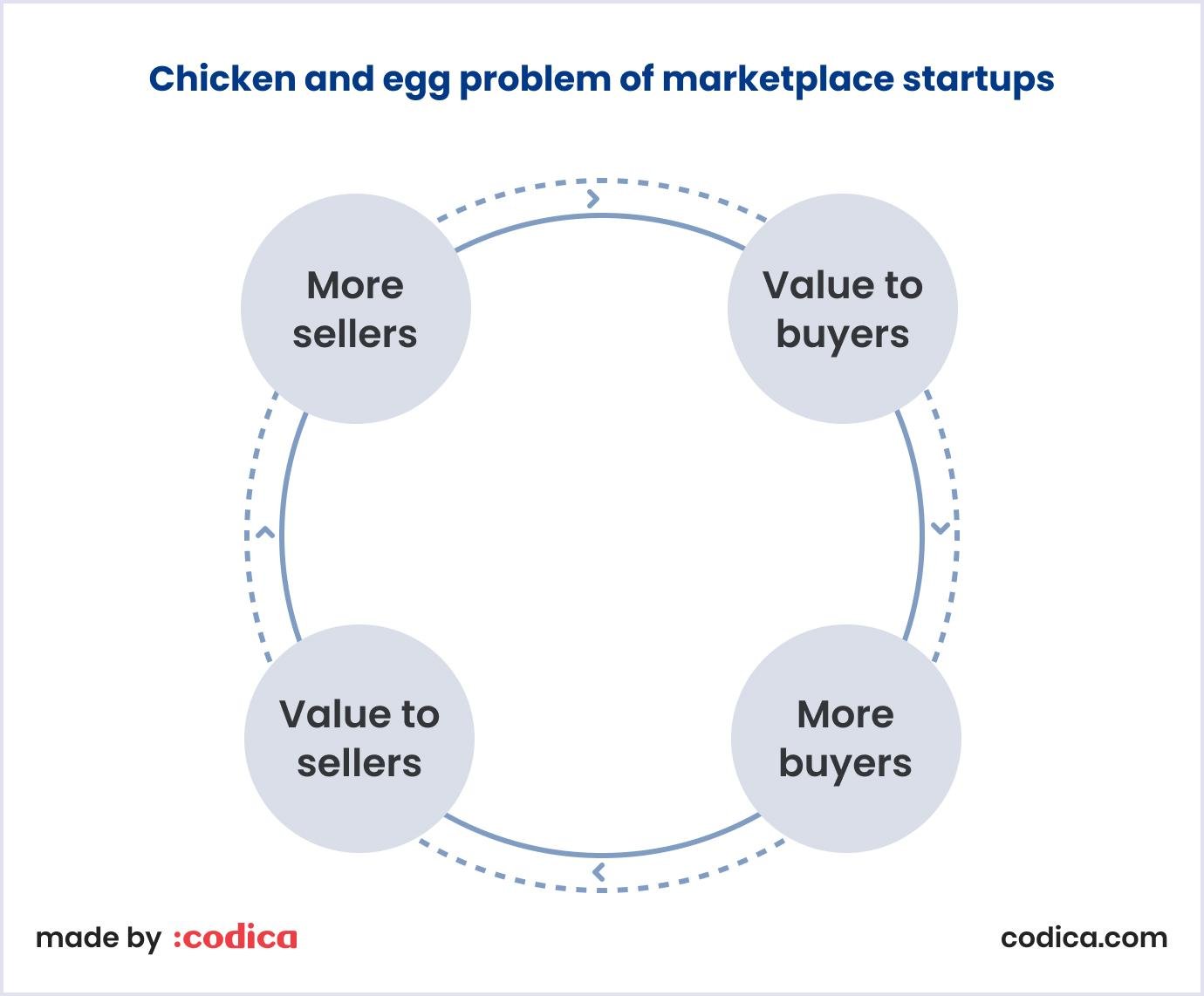
When you need to draw both sellers and buyers to your online marketplace, the marketing and traffic attraction issue comes. There are different ways to promote your service marketplace platform, as follows:
Social media marketing (SMM)
You can apply SMM practices to learn more about your client base. For example, you can join communities or groups where your potential customers can be.
Thus, you can collect information that will assist you in better communicating with them via your website content and advertisements. Also, you can use this information to define their pain points.
Paid-for advertisement
Your marketplace should appear in news feeds frequently. This will help you attract potential users' attention. So, you can promote your website by placing ads on popular platforms.
Also, you can add feature descriptions to your new marketplace. Thus, you will analyze the feedback and determine the needs of your target audience.
Keyword-focused content marketing
An effective keyword-adding strategy is essential for promotion in search engines.
Do you want search engines to understand what your site is about quickly? Do you want your intended audience to find you among the millions of online stores? So, define and apply keywords that conform to your service, target audience, and field.
After launch: promote your website systematically
In addition to promoting your website before launch, it is essential to consider promotion after. A thoughtful marketing strategy enables you to attract new users at every stage of your website development.

5. Deliver personalized customer service
Knowing your customers’ needs will help you improve the user experience in your marketplace. A personalized shopping experience turns visitors into buyers and one-time shoppers into loyal purchasers.
Let's look at the following factors that influence a positive user experience.
- Quick response to inquiries and complaints;
- Simple purchasing and selling process with secure payment options;
- The ability to interact with the company through different channels;
- Personalized customer service.
So, what do you do to personalize your online marketplace for services?
- Check out your users' data to provide personalized service, but don't make it obtrusive;
- Add personalization elements at every customer journey stage; for example, address a user with his or her name in conversation;
In conclusion, personalization helps you build long-term relationships with providers and customers. It also increases user retention, which saves you marketing costs for promoting your service marketplace.
6. Select a software platform
When creating your platform, ensuring accurate business logic is essential to make it convenient and accessible to users. Putting it shortly, there are two main options for building a service marketplace:
- Make it with the pre-built service marketplace software;
- Make it from scratch as a custom solution.
Let’s look at both options to see what pros and cons they have for you.
Using a pre-built template platform or software
If you are looking for a fast-in-launch solution, you can opt for ready-made service marketplace software. Entrepreneurs choose this option as launching the marketplace with a template requires far less time than building from scratch.
Template apps, including Adobe Commerce (Magento), Shopify, WooCommerce, Sharetribe, and more, are available in the market. These options of service marketplace software can be open-source, licensed, cloud-based, or self-hosted.
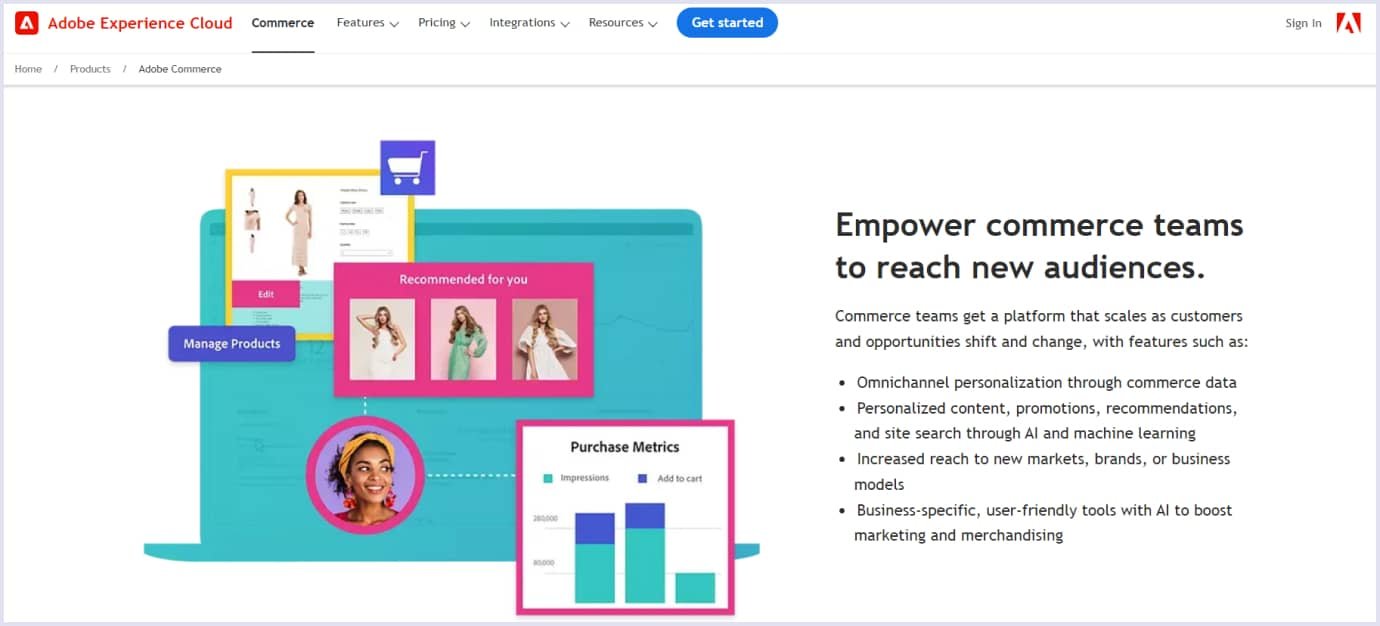
At the same time, ready-made service marketplace software has several limitations:
- The website builder may limit you in customizations for your service marketplace;
- Competitors can use the same template apps;
- You do not own a website created with a website builder.
We recommend custom development and starting with MVP development services if you want complete control over your service marketplace. Let’s discuss it in more detail.
Building your service marketplace from scratch
If you want to start a marketplace website with customized business logic, you should opt for a custom software development service. So, you can select the features, integrations, and architecture of your service marketplace.
Of course, this option requires more time and funds for coding, quality assurance services, and final launch. However, it’s a perfect choice if you want to improve your online platform with more personalized features and integrations.
There are different ways of starting the development process, which all have pros and cons. Let’s discuss all the options:
In-house development team
You hire a team of professionals who work on your projects. In this case, you get a highly qualified team, but you pay salaries, leaves, and other fees for employees.
Freelance team
You can also hire a team of freelance developers from dozens of platforms. For example, you may use Upwork, PeoplePerHour, Fiverr, or Freelancer. However, this option has subtle moments.
First, remote collaboration may be challenging if you have never experienced this option. Furthermore, you need to ensure that the team of freelancers is competent. We recommend contacting their existing customers to get feedback before starting any cooperation.
Software consultancy
The main benefit of custom software agencies is their extensive experience building multi-vendor marketplaces. Their expertise ensures that you will get precisely what you need with UI/UX design services, custom development, and thorough automated testing.
At Codica, we have successfully delivered multiple service marketplace platforms. One of our projects is a highly-performing collaboration platform for our client from Australia.
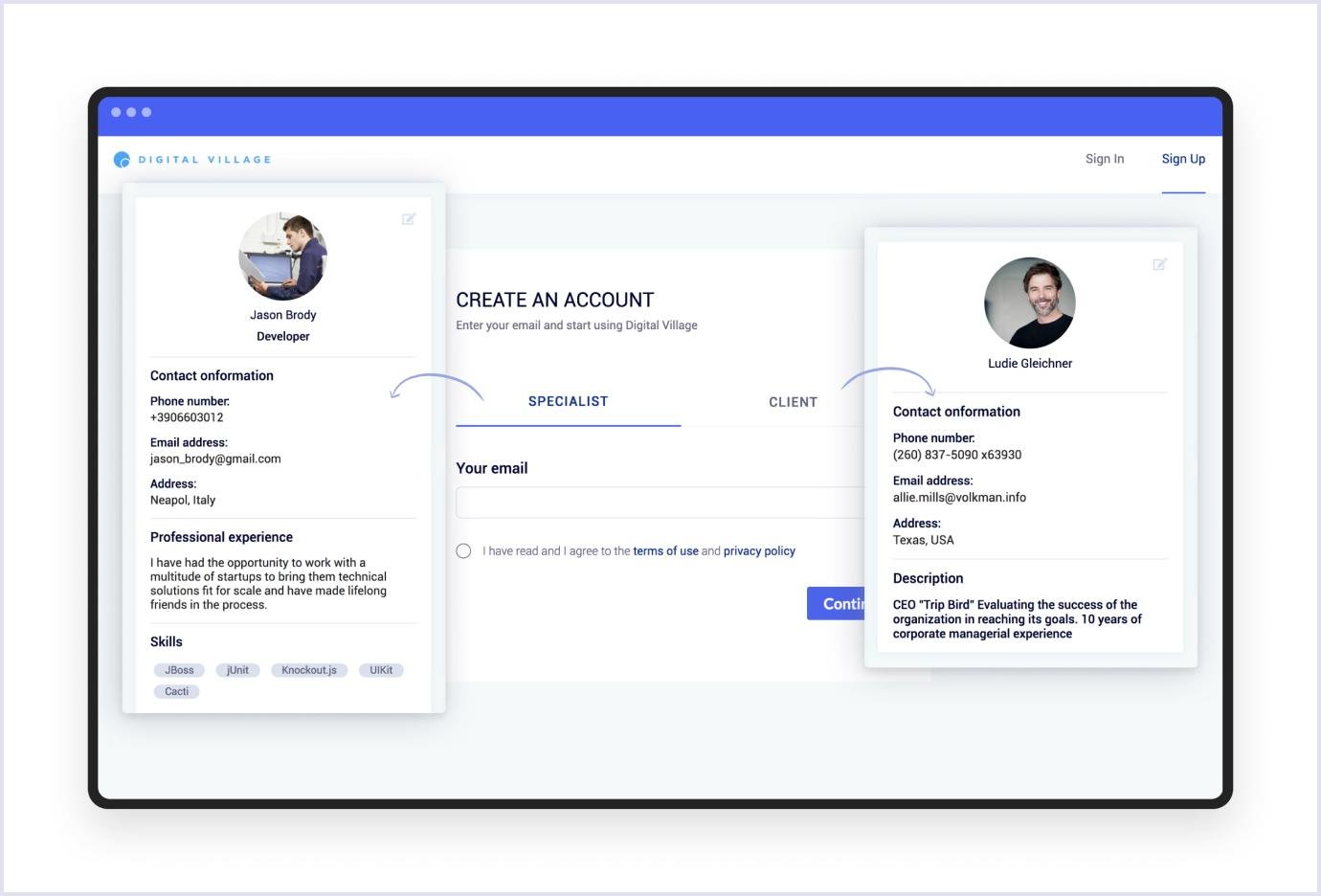
Thanks to our multi-vendor marketplace development services, the Digital Village's service marketplace can bring together employers and developers. So, they create great software products together.
Below you can see feedback from our client on the delivered web solution.
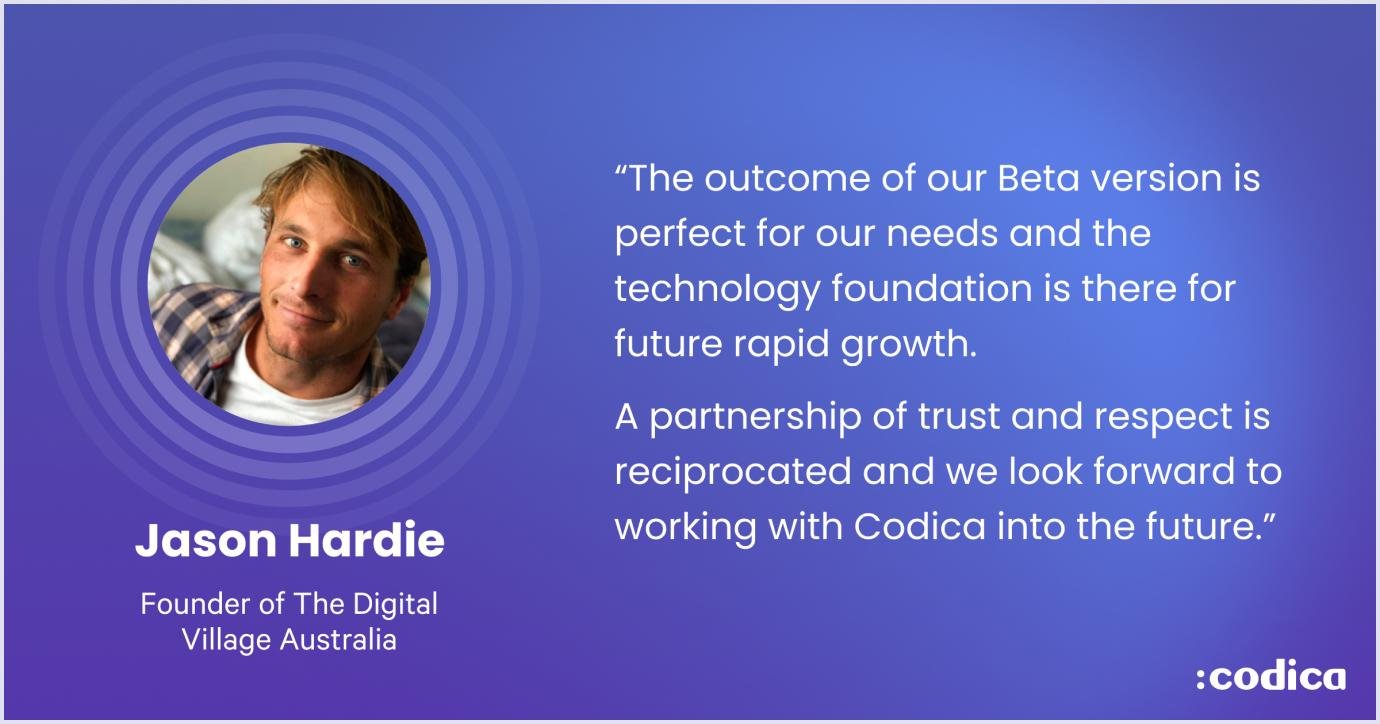
Further reading: Building a Future-Ready Marketplace with MACH Architecture
How much does it cost to develop a service marketplace?
The cost of developing a marketplace depends on which creation method you choose, whether a template-based version or custom development. It is also worth considering unforeseen expenses. For example, if you use a ready-made version, you may need to make adjustments in the future. Most often, you will have to pay extra for each improvement.
Creating a marketplace MVP from scratch will cost you about $68,400. This price is based on the average rate of Eastern European development agencies, which is $50 per hour.
This price is an estimate, and your development partner will give you precise numbers based on your service marketplace business needs.

Codica’s expertise in services marketplace development
Our company has excellent experience delivering the highest quality custom enterprise software and online marketplace development services. At Codica, we pride ourselves on our customer focus and services to create a positive experience for you.
One of the examples of service marketplaces delivered by the Codica team is PlanMyKids. It is an online booking platform.
The marketplace idea behind the project was to create a website where busy parents could book after-school activities for their children. Thus, parents would be able to find relevant service providers. This startup is intended to free parents from stress and save them time.
The startup's founder, David Watkins, wanted us to build a services marketplace that would be easy and convenient to use. Furthermore, he requested that we create a platform that was under budget. This factor was vital for a bootstrapping enterprise.

We started development with a minimum viable product (MVP). With MVP web development services, we tested the first version of a web solution and analyzed the users’ demand data. We also proved that this marketplace idea would work.
As a result, we developed an intuitive and visually appealing services marketplace with cute design elements and enhanced booking features.
Below you can see a video from David Watkins, where he shares his experience of working with our team.
Tech stack for a service marketplace
When it comes to the tech stack to create a marketplace, we offer our clients the most advanced technologies. Let's see what technologies our team chose for the PlanMyKids service marketplace:
- React;
- Rails API;
- Redis;
- Amazon Web Services (AWS);
- Redux;
- Sidekiq.
We also provided Zoho, Stripe, Google APIs, and FB login integrations.
You may also like: How We Delivered MVP for PlanMyKids - Kids Activities Marketplace
Wrapping up
Building an online service marketplace requires well-thought-out planning, thorough preparations, and skillful implementation. Regarding the specifics of the service marketplace industry, it is vital to consider convenience, reliability, and security when developing your platform. These aspects ensure that service providers and customers will find each other easily and with the best results, which contributes to your platform’s value.
The Codica team has created multiple marketplace websites, and we know how to build a booming service marketplace. Check our web projects to learn more about how we work. Feel free to contact us as well. We will consult you on any questions and project ideas you have.
